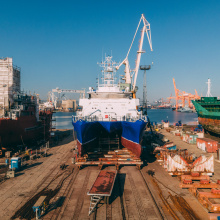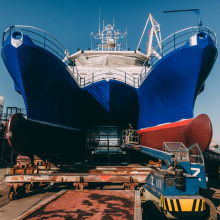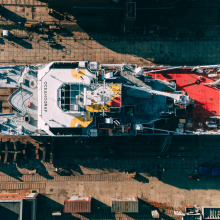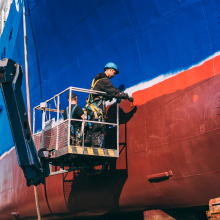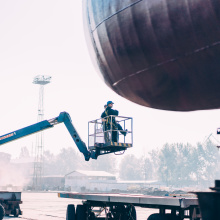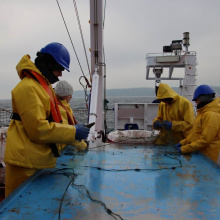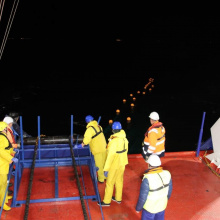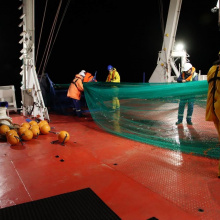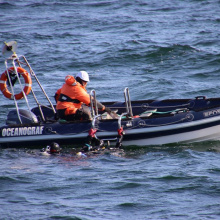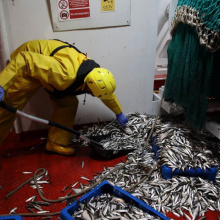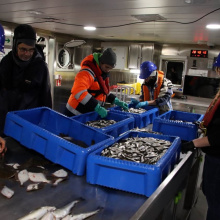The UG research vessel R/V Oceanograf made its first cruise after sea trials. During it, scientists conducted biological and hydrological research. Further cruises using the most modern scientific research vessel on the Baltic Sea are being carried out.
The research vessel UG R/V Oceanograf underwent a month-long class overhaul, carried out after the first five years of operation. - 'The individual components were checked by the relevant services. There were no major faults on the ship,' - informs Filip Dąbrowski from the Office of the Rector's Plenipotentiary for Maritime Infrastructure. - 'A few elements required attention, such as some of the floors in the most frequented areas. The ship's outer plating was refreshed and "rebranded", along with the change of logo,' - he adds. Thus, the ship was approved for further operation for another five years. The repair was carried out by NET MARINE - Marine Power Service Sp. z o.o. and took place at the shipyard in Gdynia.
First research cruise
At the beginning of October, the first cruise was conducted after the vessel was docked. During the voyage, staff and students of the Institute of Oceanography UG carried out the first research at nine points in the Bay of Puck. - 'The condition of the benthic fish habitats in the area of the Kosakowo Cavern Underground Gas Storage Facility was checked,' says dr hab. Mariusz Sapota, prof. UG, director of the Institute of Oceanography at the Faculty of Oceanography and Geography of the University of Gdańsk. - 'Among other things, the study examined the cover of the seabed by macrophytes, taking plant samples, and examined the basic hydrological parameters of the water: temperature, salinity and oxygenation. An underwater vehicle was used in the works and fish were also caught in the area,' explains dr hab. Mariusz Sapota, prof. UG.
According to the participants, at each point profiles were made with a CTD probe from the surface to the bottom to determine the temperature, salinity and oxygenation of the water. The next stage of the work was fishing at all designated points. Multi-panel sets of gillnets were set at eight of them, and at the deepest point (14B) a bottom trawl was performed. The next day, a detailed ichthyological analysis of the catch was undertaken. The most modern and versatile scientific research vessel in the Baltic Sea area continues oceanographic research in various areas of the Baltic Sea.
The scientific team:
underwater vehicle work: dr Jakub Idczak, mgr Patryk Pezacki,
underwater macrophyte collection: mgr Piotr Jakub Cybula, mgr Maciej Stanisław Nocny,
fishing and fish analyses: dr Anna Ewa Dziubińska, mgr Agata Turowicz-Cybula, mgr Maciej Jakub Kramkowski, mgr Marta Ewa Kucharska, mgr Kaja Patrycja Czajkowska, Przemysław Dariusz Kopania, Adam Marek Makatun, dr hab. Mariusz Remigiusz Sapota (cruise manager).

